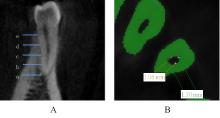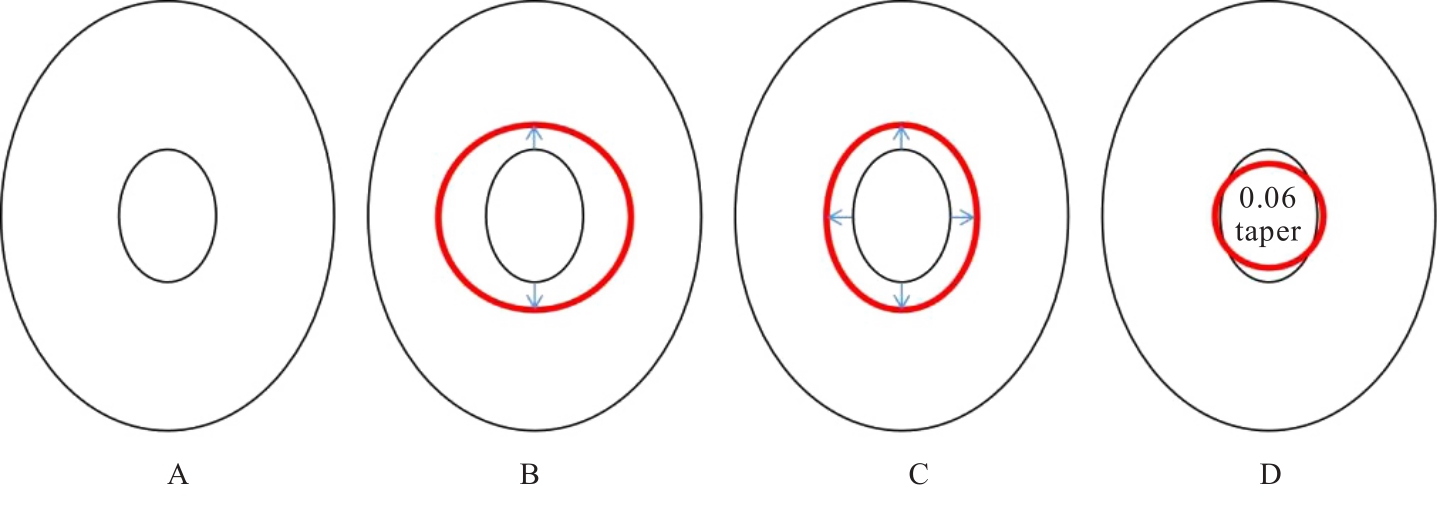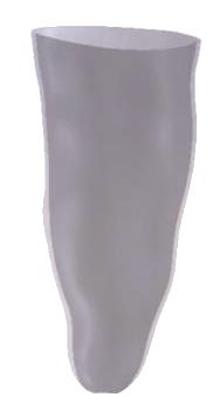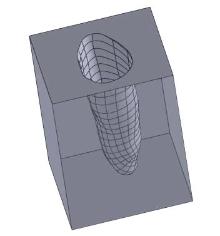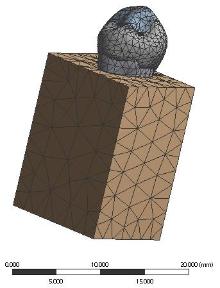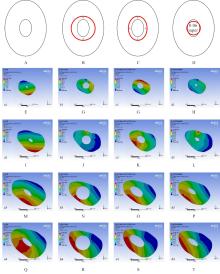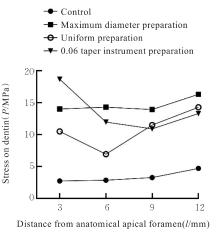吉林大学学报(医学版) ›› 2024, Vol. 50 ›› Issue (5): 1259-1265.doi: 10.13481/j.1671-587X.20240509
• 基础研究 • 上一篇
基于下颌第一前磨牙根管预备前后牙本质应力分布差异的CBCT和三维有限元分析
- 吉林大学口腔医院牙体牙髓科,吉林 长春 130021
CBCT and three-dimensional finite element analysis based on differences in dentin stress distribution before and after root canal preparation of mandibular first premolar teeth
Xinmiao JIANG,Zhibo XU,Yuqi ZHEN,Quzhen BAIMA,Xiuping MENG( )
)
- Department of Endodontics,Stomatology Hospital,Jilin University,Changchun 130021,China
摘要:
目的 分析下颌第一前磨牙根管直径并利用有限元分析法模拟3种不同预备方式下牙本质的应力分布,为临床下颌第一前磨牙根管预备策略提供依据。 方法 选择21例锥形束计算机断层扫描(CBCT)图像资料完整的患者,将CBCT原始数据DICOM格式文件导入Mimics 21.0软件,测量距下颌第一磨牙根尖孔3、6、9和12 mm处根管直径并分段计算根管锥度,在此基础上构建牙体组织和牙周组织三维有限元模型,分为对照组、最大直径预备组、均匀预备组和0.06锥度器械预备组。在ANSYS Workbench 17.0有限元分析软件中,对各组颊尖舌斜面分别施加200 N载荷,分析各组下颌第一前磨牙牙本质所受应力。 结果 距离下颌第一前磨牙根尖孔3~6 mm段、6~9 mm段和9~12 mm段的根管锥度分析,近远中向距根尖孔3~6 mm根管锥度基本相同;颊舌向距根尖孔6~9 mm段根管锥度平均为0.29,大于根尖1/3和根上1/3。在相同的载荷下,各组下颌第一前磨牙牙本质的应力峰值依次增大,分别为4.693 6、16.304 0、14.278 0和18.682 0 MPa。最大直径预备组受力集中于根管壁且应力最大,均匀预备组受力集中于牙根表面且各截面应力均小于最大直径预备组,0.06锥度器械预备组应力集中于根尖1/3牙根表面。 结论 下颌第一前磨牙根管具有椭圆形变锥度的特殊形态,近远中向和颊舌向根管直径与锥度相差较大,不同预备方式对根管壁的应力不同,均匀预备扩大根管的预备方式最佳。
中图分类号:
- R78
